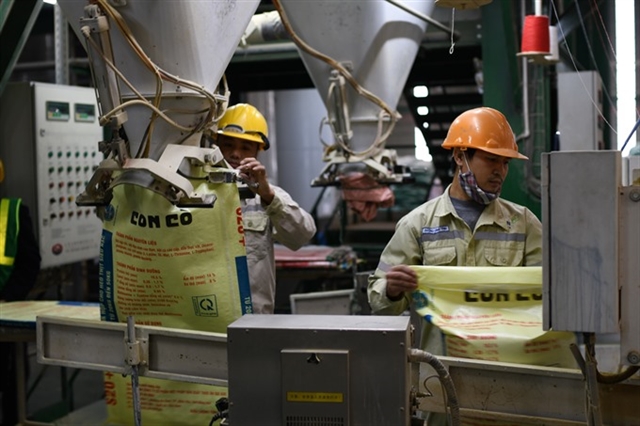
HÀ NỘI — Weaker foreign direct investment inflow on the back of the Covid-19 pandemic and a likely preference by the central bank for a weaker Vietnamese đồng to support export competitiveness would be key drivers of đồng weakness over the near term, although any currency weakening will be measured to avoid potential punitive measures from the US, experts forecast.
Fitch Solutions experts predicted the Vietnamese đồng to average VNĐ23,475 per US dollar in 2020 and VNĐ23,650 in 2021 from the current VNĐ23,309.
“We maintain our view for the đồng to gradually depreciate against the US dollar over the long term due to its overvaluation and Việt Nam’s higher inflation vis-à-vis the US,” they said.
The experts forecast FDI inflow will slow drastically in 2020 due to the COVID-19 pandemic and this will provide less support to the đồng. Last year saw US$38 billion in total registered investment capital, up 7 per cent from $35.5 billion in 2018. FDI inflow in 2019 was supported by supply chain relocation from China by businesses seeking to diversify their manufacturing locations amid the height of the US-China trade war then.
“With Việt Nam having positioned itself as a low-cost regional manufacturing hub in the global supply chain, export demand and also FDI inflow will be heavily susceptible to swings in global economic demand. Given that the global economy is now in recession as a result of the COVID-19 pandemic, external demand will weaken significantly as compared to before,” they predicted.
Business investment will weaken as companies prioritise cash conservation amid an uncertain economic environment. Moreover, FDI decisions tend to be made only after site visits by stakeholders, especially in Việt Nam’s case. Travel and movement restrictions will continue to prohibit these visits, thereby slowing the decision-making process and FDI inflow.
“We also expect the State Bank of Việt Nam (SBV) to favour a weaker đồng to support its external sector. Việt Nam is dependent on exports as exports account for 95 per cent of GDP, and as such a weaker currency would ideally position Việt Nam for a stronger exports rebound with global demand likely to pick up after restrictive measures and lockdowns are gradually lifted.”
From a production perspective, Fitch believed currency weakness will mainly support the country’s large manufacturing sector, which is being buffeted by strong headwinds from supply chain disruptions and a weak demand outlook.
“That said, we believe that any currency weakness is likely to be mild so as to avoid possible sanctions from the US given that Việt Nam has remained on the US Treasury’s currency manipulator watchlist in its January 2020 report.”
Being on the watchlist implies that Việt Nam is still at risk of coming under punitive tariffs such as those levied on China, although these risks appear low, as the US will likely continue to reduce its dependence on Chinese exports by reorganising its supply chain with other partners, such as Việt Nam.
Fitch expected with a foreign exchange reserve position of $80 billion in February, representing 3.8 months of imports, the central bank has sufficient firepower to ensure a measured pace of currency depreciation.
Fitch also forecast inflation in Việt Nam to average 3.8 per cent in 2020 and 4.2 per cent in 2021, mainly on the back of food inflation as animal protein prices are rising due to supply shortages. VNS
.jpg)






























